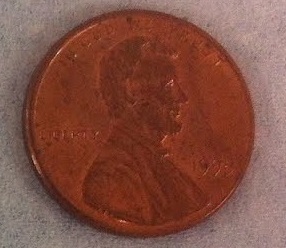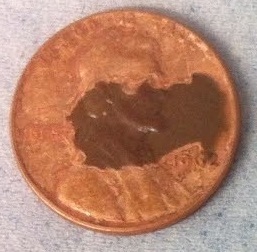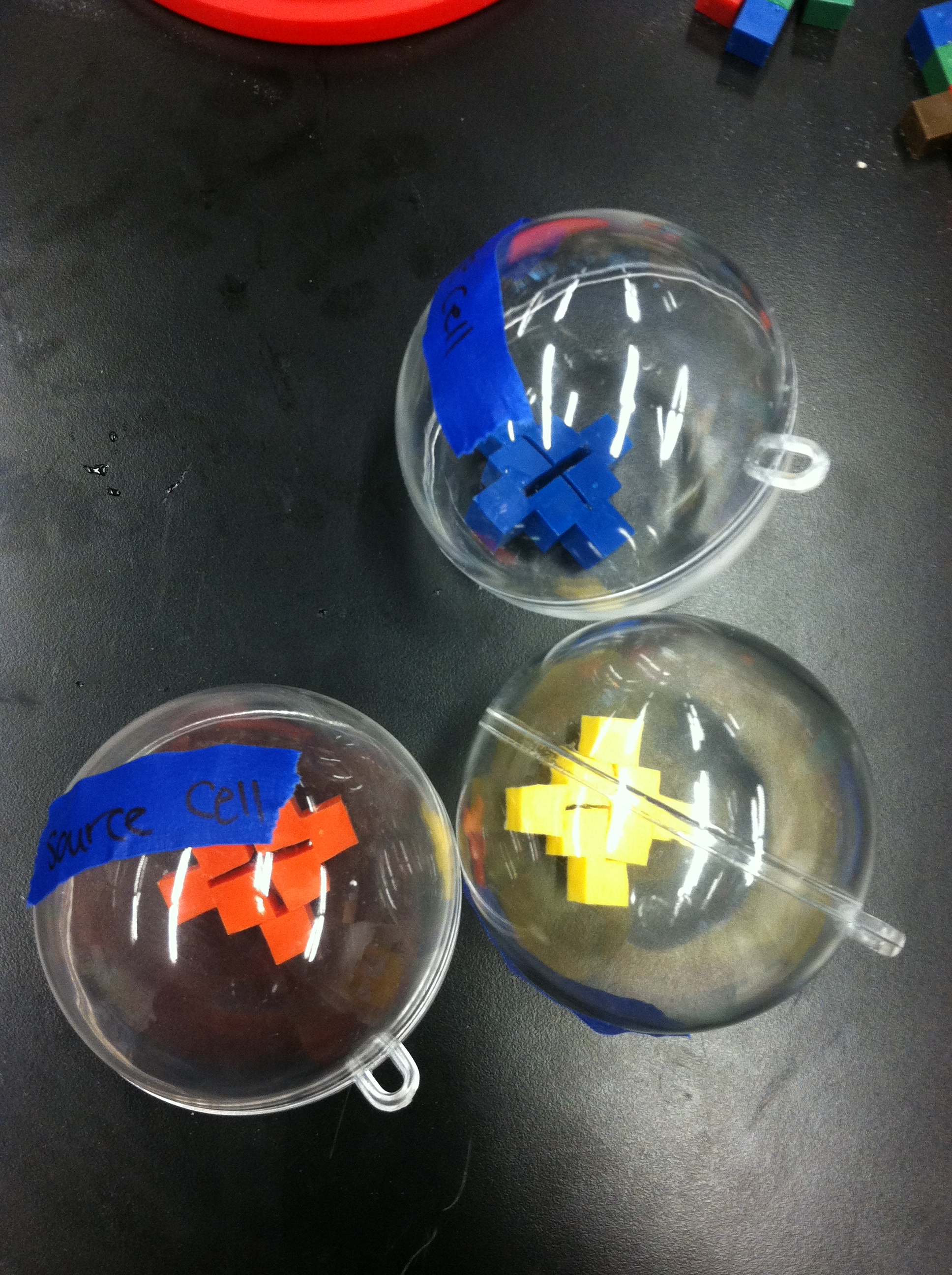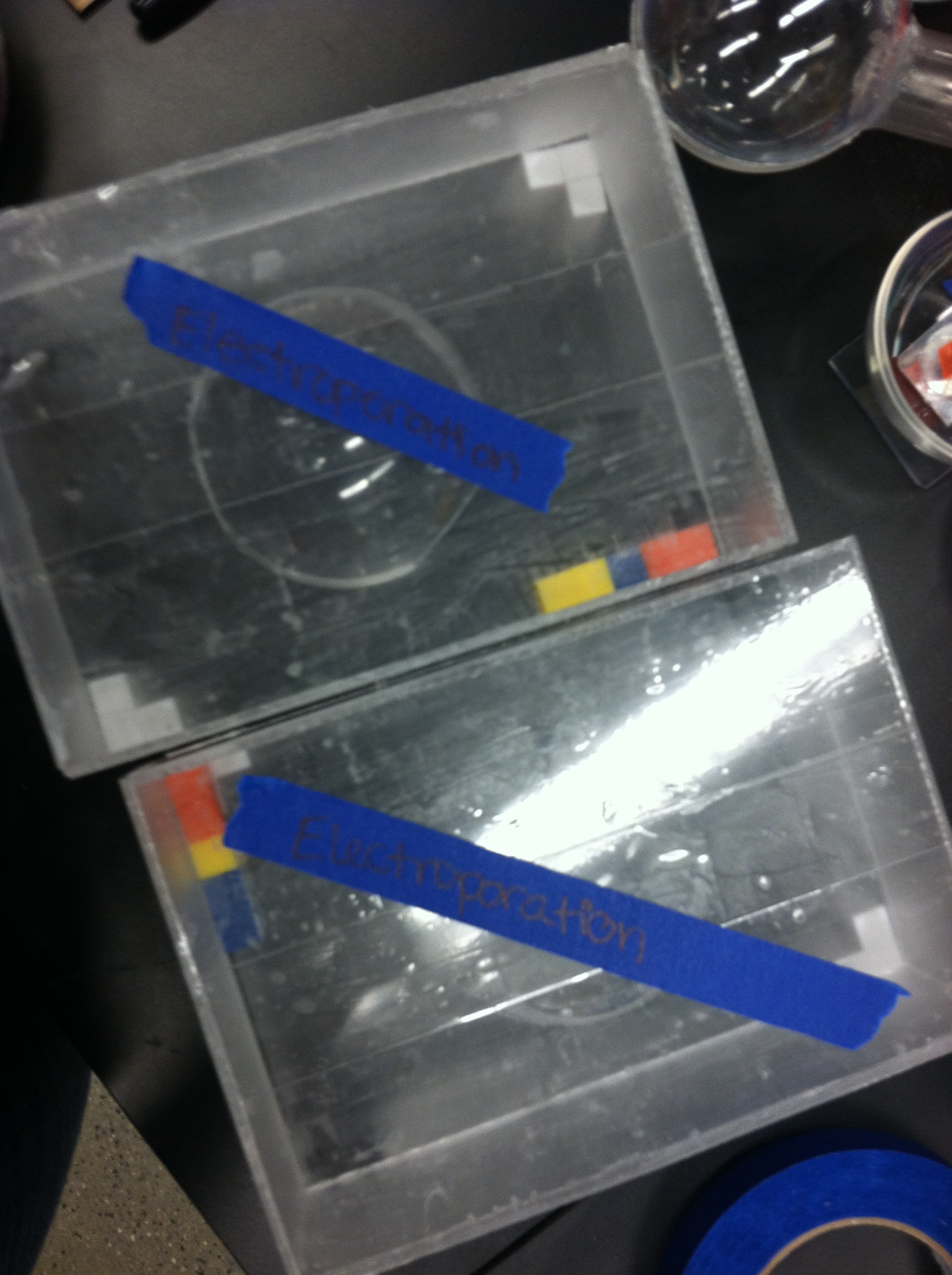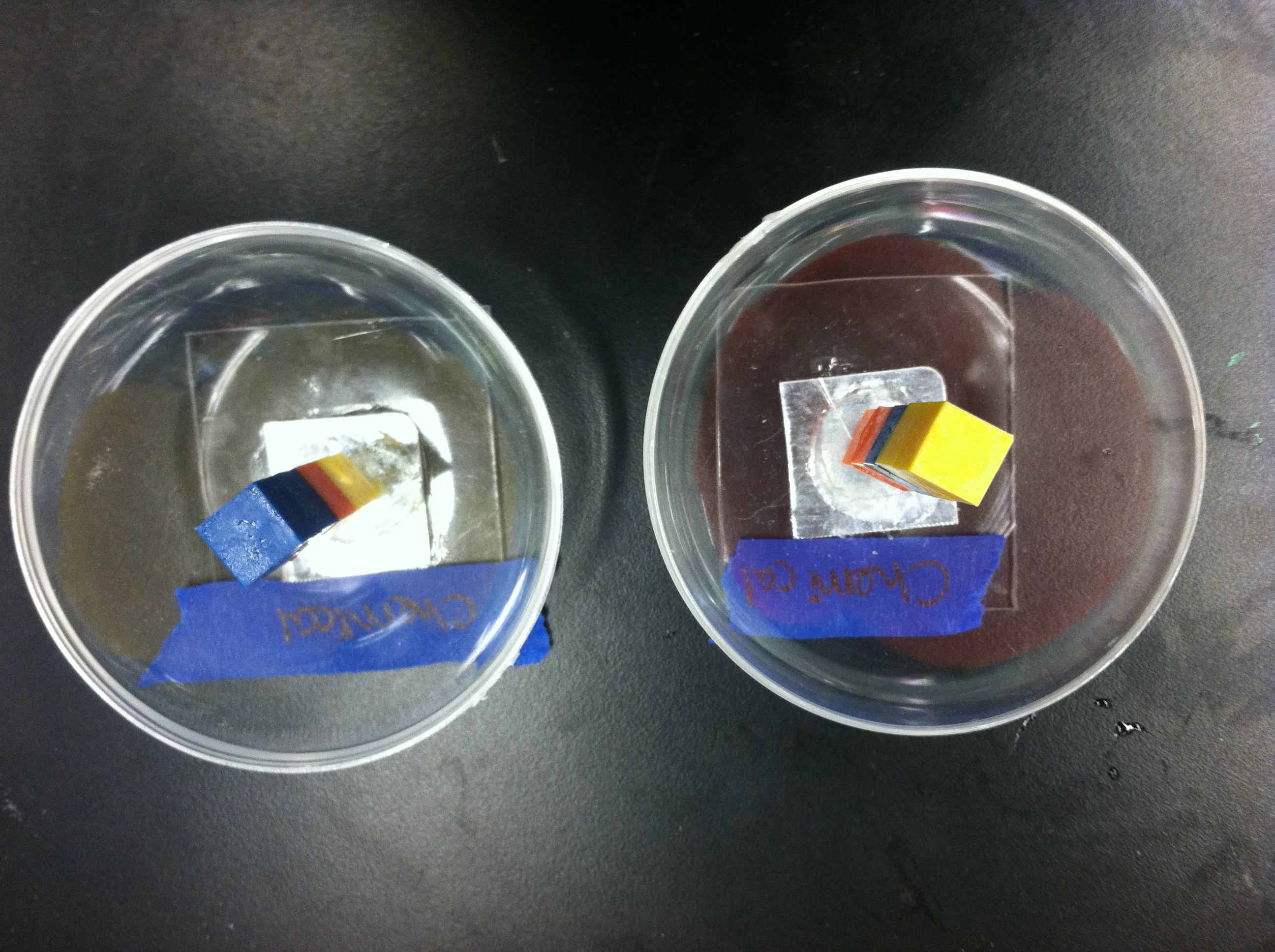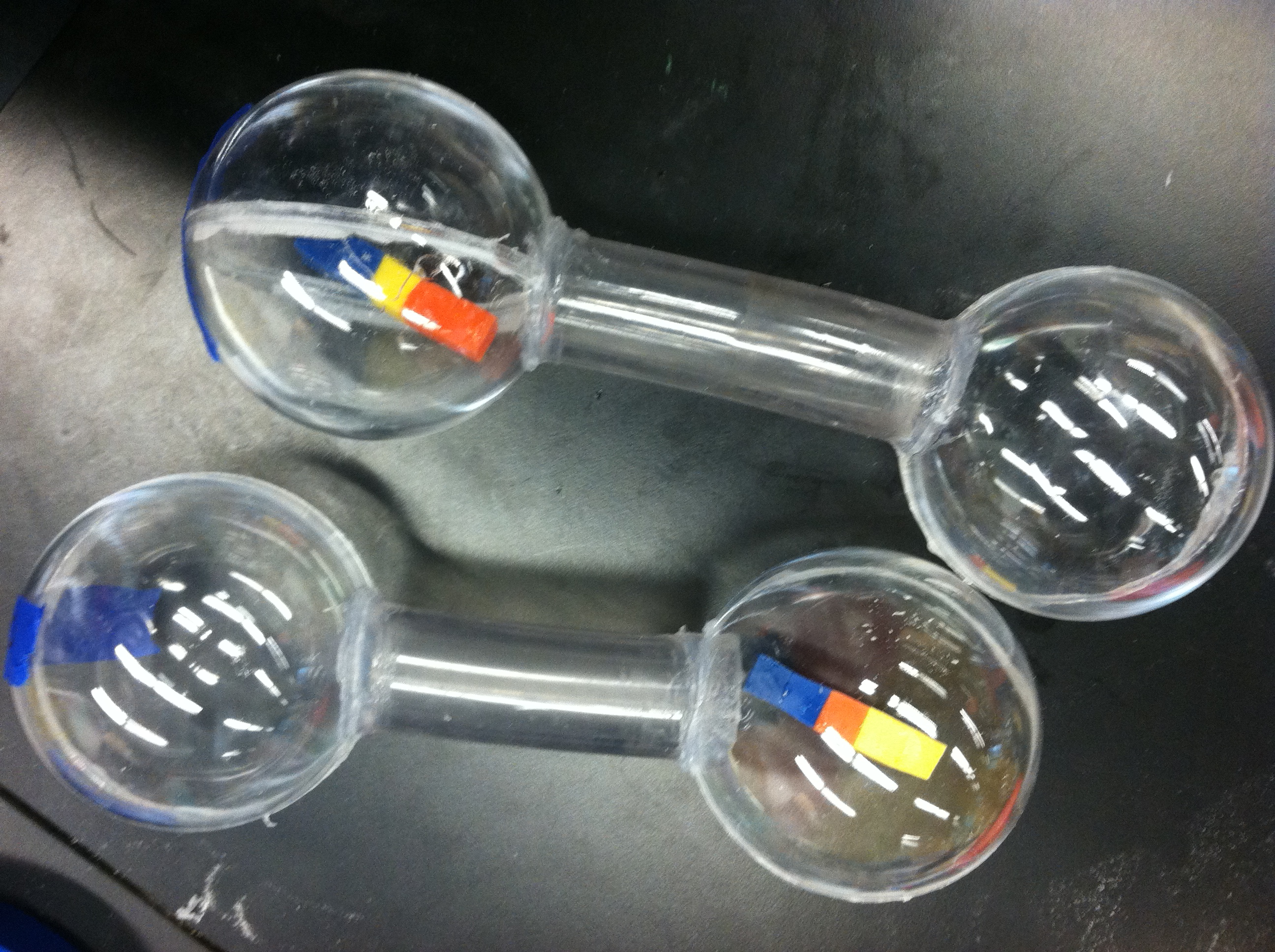Team:Columbia-Cooper-NYC/Outreach
From 2012.igem.org
(→Outreach) |
(→Outreach) |
||
| Line 187: | Line 187: | ||
[[File:Maker7.gif|600px|thumb|center|Our table at Maker Faire NYC 2012]] | [[File:Maker7.gif|600px|thumb|center|Our table at Maker Faire NYC 2012]] | ||
| + | |||
| + | |||
| + | |||
| + | [[File:penny.jpg|100px|thumb|left|Normal Penny]][[File:Etched Penny.jpg|100px|thumb|left|A Penny Etched by Ferrooxidans]][[File:Source Cells.jpg|115px|thumb|right|Our Source Cells]] [[File:Electroporation.jpg|115px|thumb|right|Our Electroporation Game]] | ||
This year Columbia- Cooper iGEM hosted a table at the 2012 Maker Faire in New York City. Our table featured posters explaining both the genetic and chemical aspects of out project, games to teach children about recombinant DNA and bacterial transformation as well as pennies etched by our A. Ferrooxidans with the letters "CU" to represent each of our schools as well as the chemical symbol for copper. | This year Columbia- Cooper iGEM hosted a table at the 2012 Maker Faire in New York City. Our table featured posters explaining both the genetic and chemical aspects of out project, games to teach children about recombinant DNA and bacterial transformation as well as pennies etched by our A. Ferrooxidans with the letters "CU" to represent each of our schools as well as the chemical symbol for copper. | ||
| - | + | Each of our games contained plastic spheres which represented cells and a strip of blue, yellow and orange DNA. We explained to the kids that we took DNA out of our source cells, cut out the parts we wanted and put them back together in a new combination. Now we need the kids help to put our new DNA into a cell so it can be used. In the conjugation game the 2 cells were connected by a plastic tube and the goal was to move the DNA from one cell to the other. In the electroporation game the kids used a wand with a magnet on the end to slide the recombinant DNA through one of the large pores into our cell. As the kids worked on the game we had a chance to explain to their parents that in the lab we do this by shocking the cells with 1800 volts. Finally our chemical transformation game involved throwing the DNA into our competent cells. In order to help keep the DNA in the cell rather than sliding right out we attached a small magnet to the bottom on the DNA and put a piece of metal between the cell and the base. | |
| - | + | [[File:Chemical Transfomration.jpg|150px|thumb|left|Our Chemical Transformation Game]][[File:conjugation.jpg|150px|thumb|center|Our Conjugation Game]] | |
| - | + | ||
| - | [[File: | + | |
| - | [[File: | + | |
Revision as of 17:07, 2 October 2012
Outreach
This year Columbia- Cooper iGEM hosted a table at the 2012 Maker Faire in New York City. Our table featured posters explaining both the genetic and chemical aspects of out project, games to teach children about recombinant DNA and bacterial transformation as well as pennies etched by our A. Ferrooxidans with the letters "CU" to represent each of our schools as well as the chemical symbol for copper.
Each of our games contained plastic spheres which represented cells and a strip of blue, yellow and orange DNA. We explained to the kids that we took DNA out of our source cells, cut out the parts we wanted and put them back together in a new combination. Now we need the kids help to put our new DNA into a cell so it can be used. In the conjugation game the 2 cells were connected by a plastic tube and the goal was to move the DNA from one cell to the other. In the electroporation game the kids used a wand with a magnet on the end to slide the recombinant DNA through one of the large pores into our cell. As the kids worked on the game we had a chance to explain to their parents that in the lab we do this by shocking the cells with 1800 volts. Finally our chemical transformation game involved throwing the DNA into our competent cells. In order to help keep the DNA in the cell rather than sliding right out we attached a small magnet to the bottom on the DNA and put a piece of metal between the cell and the base.
 "
"
